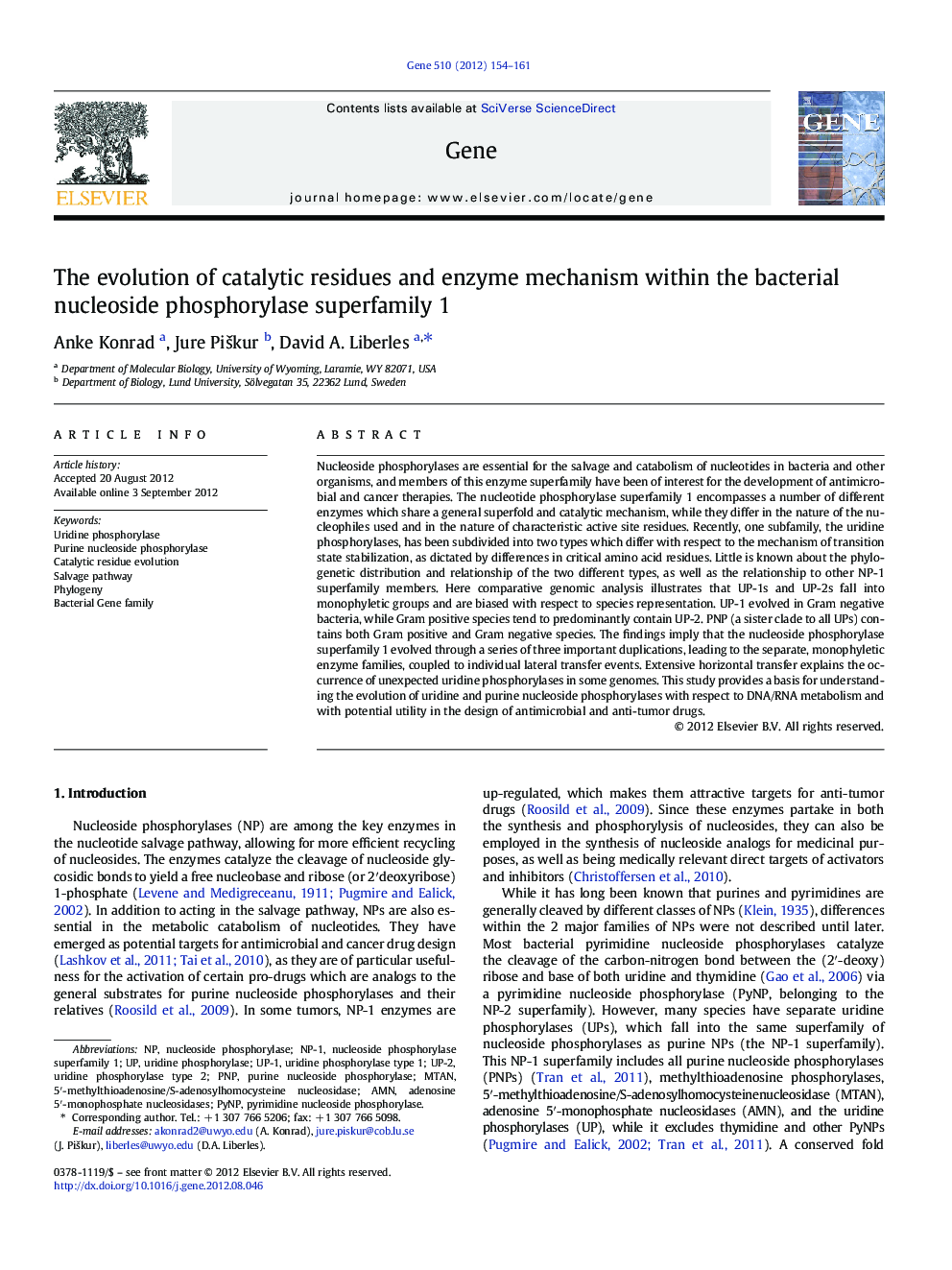| کد مقاله | کد نشریه | سال انتشار | مقاله انگلیسی | نسخه تمام متن |
|---|---|---|---|---|
| 2817580 | 1569849 | 2012 | 8 صفحه PDF | دانلود رایگان |

Nucleoside phosphorylases are essential for the salvage and catabolism of nucleotides in bacteria and other organisms, and members of this enzyme superfamily have been of interest for the development of antimicrobial and cancer therapies. The nucleotide phosphorylase superfamily 1 encompasses a number of different enzymes which share a general superfold and catalytic mechanism, while they differ in the nature of the nucleophiles used and in the nature of characteristic active site residues. Recently, one subfamily, the uridine phosphorylases, has been subdivided into two types which differ with respect to the mechanism of transition state stabilization, as dictated by differences in critical amino acid residues. Little is known about the phylogenetic distribution and relationship of the two different types, as well as the relationship to other NP-1 superfamily members. Here comparative genomic analysis illustrates that UP-1s and UP-2s fall into monophyletic groups and are biased with respect to species representation. UP-1 evolved in Gram negative bacteria, while Gram positive species tend to predominantly contain UP-2. PNP (a sister clade to all UPs) contains both Gram positive and Gram negative species. The findings imply that the nucleoside phosphorylase superfamily 1 evolved through a series of three important duplications, leading to the separate, monophyletic enzyme families, coupled to individual lateral transfer events. Extensive horizontal transfer explains the occurrence of unexpected uridine phosphorylases in some genomes. This study provides a basis for understanding the evolution of uridine and purine nucleoside phosphorylases with respect to DNA/RNA metabolism and with potential utility in the design of antimicrobial and anti-tumor drugs.
► Determination of the phylogenetic relationship between NP-1 superfamily enzymes.
► UPs (and UP types), PNPs, and nucleosidases all form monophyletic groups.
► Differences in active site residues between UP types and PNP evolved once.
► Enzyme classes evolved through a number of key divergences.
Journal: Gene - Volume 510, Issue 2, 1 December 2012, Pages 154–161